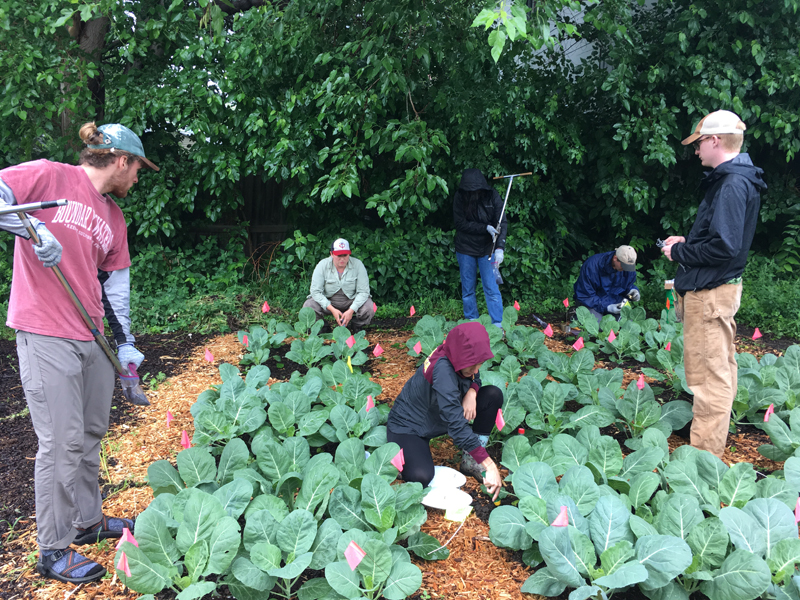What is a community garden?
Gardens have been an integral part of many cultures throughout history. According to the ecolife dictionary, “a community garden is a shared piece of land gardened collectively by a group of people in an urban area.” Now more than ever, community gardens are rising in popularity with an increase in urban agriculture all over the US, because of the effects of rising food deserts and vacant lands present in urban neighborhoods. This process of growing produce alongside your neighbors is a great way to get involved in your community while helping the environment and living a healthier lifestyle at the same time. According to California’s Local Government Commission, community gardens are integral to “creating healthy, livable neighborhoods.” In the past, community gardens were commonly used to provide food for families year-round, however, now they are more commonly used as a more sustainable alternative to buying produce from the grocery store. If everyone got involved or started their own garden we could probably even reduce our carbon footprint!
Sustainability of community gardens
There are many environmental benefits to community gardening especially in urban areas because they tend to promote unhealthy lifestyles. Yes, getting fruits and vegetables is better than buying a cheeseburger! The addition of green spaces in urban areas has helped to develop healthier lifestyles and more sustainable communities in urban areas. It has also helped reduce food transportation costs and reduce water runoff. Another reason community gardening is a sustainable form of food production is because it improves the air and soil quality, it replaces impervious structures and improves water infiltration, and reduces neighborhood waste through composting. Here are several different purposes for communal garden structures:
- Herb garden
- Flower garden
- Native plant garden
- Children’s garden
- Community-run volunteer
- Gathering place

White River Garden Sunken Herb Garden

A beautiful community flower garden!
Want to start your very own community garden? Here are some important steps:
- Define: purpose and management: Ensuring the long term sustainability of a community garden is way more complicated than it looks. It’s not just about knowing how to garden. You need to figure out what you want the goal of your garden to be and plan out how you are going to support it financially and how many volunteers are necessary. Most people are just really excited to grow their own fruits a vegetables, however, the reality of it is planning out a long term garden is a lot of work. There is a lot of manual labor and planning out of who is going to be doing what tasks such as pulling weeds, and picking up the slack when other volunteers can’t make it.
- Community garden structures: Another factor to consider when planning out your garden is whether it is going to be set up more as individual plots or as a communal space. Individual plots are areas that gardeners rent to do with as they choose. As opposed to the community working together to maintain the communal plot and share in the benefits. This step is crucial in the planning aspect of starting your own garden, because you have to decide what you want the whole purpose of you garden to be. Do you want it to be open to all or more private to close family and friends?
- Shared space, shared community: These gardens are important for the development of sense of community in urban areas. Research has shown that levels of connection and interaction tend to be higher in gardens that reserve some area for communal space. This shared space can be used for many different community events, holding classes, planting of demonstration gardens, gardening for donation, etc. They key to success is plan for short and long term finances and management and make sure day to day activities are planned and sorted amongst the volunteers at all times to maximize efficiency and time.
Even though it seems like a lot of work, seeing the hard work and planning you put in come into effect is a very rewarding and humbling process. I encourage everyone to get involved in their local community garden, and I challenge you to start your own!
Blog post by Alexia Perez
